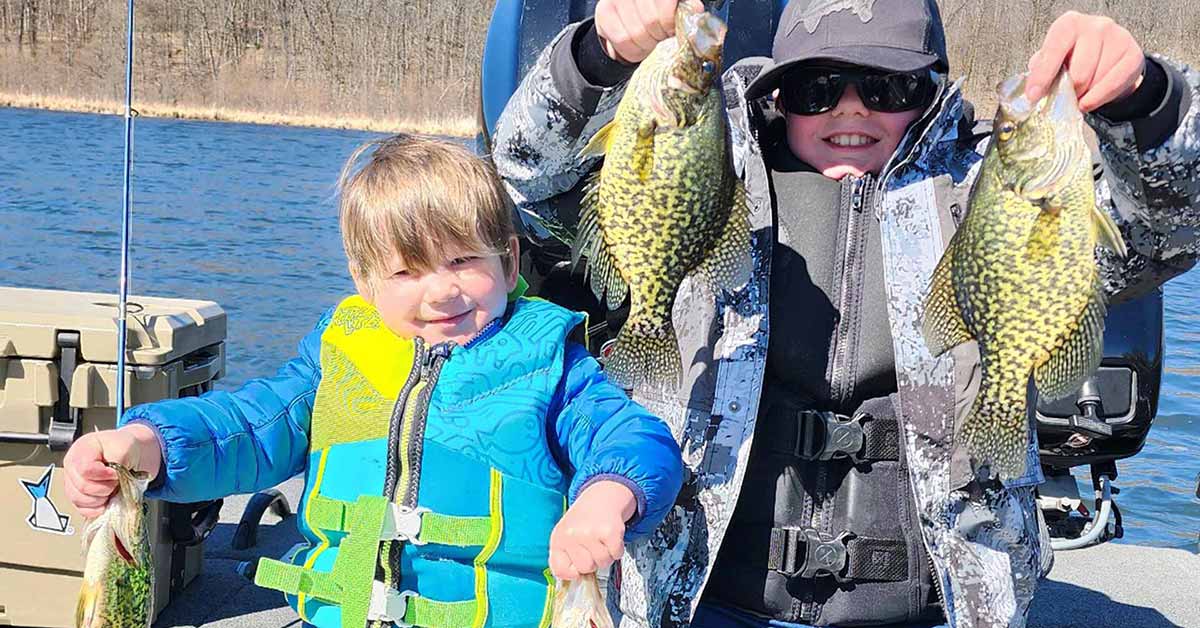Big fish like big meals! That’s why trophy pike expert George “Coop” Cooper throws weighted muskie jerkbaits when he’s after super-sized pike!
Trophy pike lakes often experience substantial ice cover throughout much of the year. However, there are times when the water gets too warm for extended periods, causing the pike to become stressed and live shorter lives. As a result, they seldom achieve large sizes. Pike are born in marshy bays and roam the shallows throughout the spring. They have a real fondness for deep weed vents and feed aggressively during this time.
In the summer, when water temperatures rise above 70 degrees, large pike often vacate the shallows and move to deeper, cooler water if available. In the fall, as the water cools, pike start to feed heavily, preparing for a long, cold winter. This makes early fall the perfect time to intercept big pike as they chow down on large baits.
Coop, an experienced angler, once had the best day of his entire fishing career chasing big pike. He recalls his experience on Mille Lacs Lake in Minnesota, where he caught fish that were all over 40 inches. Coop and his companions had an incredible day on the water, with each of them landing a fish. Coop was even lucky enough to catch a 50-inch pike, which he considers a highlight of his fishing career. The bite that day was phenomenal, with all the fish coming off wood. Coop looks back on that day with fondness and cherishes the memories.
Studies have shown that large pike prefer to feed on bait fish that are about one-third their body length. Since a typical 20-pound pike is around 42 inches long, a 14-inch lure is considered ideal. However, finding lures of that size can be challenging, and casting and retrieving them can be difficult. Nevertheless, Coop and his fellow anglers are not afraid to toss big baits and have developed techniques to manage them.
Coop has a particular fondness for weighted jerk baits, which he modifies to make them run deeper, closer to the level of the pike. He has adapted a traditional musky tactic to trigger pike using large baits designed for musky fishing. In addition to jerk baits, Coop also throws a wide range of tandem spinners, bucktails, and crankbaits, all customized with his favorite paint colors and equipped with razor-sharp hooks.
To handle the stress of casting and to ensure a solid hookset, Coop uses heavy-duty musky gear and 80 to 100-pound test superlines. This allows him to handle the oversized baits and deliver powerful strikes. On the other hand, I prefer to use a smaller and lighter lure matched with a quantum heavy action rod and reel. I pair it with a 65-pound test suffix performance braid, which balances nicely with the smaller profile lures I choose to use.
By adapting their gear and techniques, Coop and I are able to target and catch big pike during the early fall when water temperatures are in the 60s. This is the perfect time to intercept these large predators as they feed heavily and prepare for the upcoming winter.
One of the highlights of Coop’s fishing career was a day he spent on Mille Lacs Lake in Minnesota. On that day, he and his companions caught pike that were all over 40 inches, with Coop landing a 50-inch monster. The bite was incredible, with all the fish coming off wood. Coop considers it a day he will cherish forever.
When targeting big pike, it’s important to understand their feeding preferences. Studies have shown that large pike prefer to feed on bait fish that are about one-third their body length. Since a typical 20-pound pike is around 42 inches long, a 14-inch lure is considered ideal. However, finding lures of that size can be challenging, and casting and retrieving them can be difficult.
Coop, however, is not afraid to toss big baits and has developed techniques to manage them. He has a particular fondness for weighted jerk baits, which he modifies to make them run deeper, closer to the level of the pike. By adapting a traditional musky tactic, Coop is able to trigger pike using large baits designed for musky fishing. He also throws a wide range of tandem spinners, bucktails, and crankbaits, all customized with his favorite paint colors and equipped with razor-sharp hooks.
To handle the stress of casting and ensure a solid hookset, Coop uses heavy-duty musky gear and 80 to 100-pound test superlines. This allows him to handle the oversized baits and deliver powerful strikes. On the other hand, I prefer to use a smaller and lighter lure matched with a quantum heavy action rod and reel. I pair it with a 65-pound test suffix performance braid, which balances nicely with the smaller profile lures I choose to use ## Fishing for Trophy Pike in Early Fall
Trophy pike lakes often experience substantial ice cover throughout much of the year. However, there are times when the water gets too warm for extended periods, causing the pike to become stressed and live shorter lives. As a result, they seldom achieve large sizes. Pike are born in marshy bays and roam the shallows throughout the spring. They have a real fondness for deep weed vents and feed aggressively during this time.
In the summer, when water temperatures rise above 70 degrees, large pike often vacate the shallows and move to deeper, cooler water if available. In the fall, as the water cools, pike start to feed heavily, preparing for a long, cold winter. This makes early fall the perfect time to intercept big pike as they chow down on large baits.
Coop, an experienced angler, once had the best day of his entire fishing career chasing big pike. He recalls his experience on Mille Lacs Lake in Minnesota, where he caught fish that were all over 40 inches. Coop and his companions had an incredible day on the water, with each of them landing a fish. Coop was even lucky enough to catch a 50-inch pike, which he considers a highlight of his fishing career. The bite that day was phenomenal, with all the fish coming off wood. Coop looks back on that day with fondness and cherishes the memories.
Studies have shown that large pike prefer to feed on bait fish that are about one-third their body length. Since a typical 20-pound pike is around 42 inches long, a 14-inch lure is considered ideal. However, finding lures of that size can be challenging, and casting and retrieving them can be difficult. Nevertheless, Coop and his fellow anglers are not afraid to toss big baits and have developed techniques to manage them.










